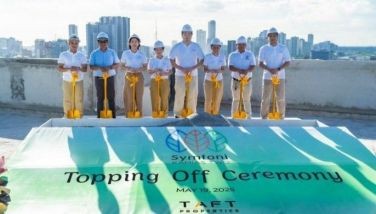Gabii sa Kabilin 2013
Eleanor finds out:
MUSEO DE TALISAY. Except for having to wait half an hour for Line 6 bus designated to ferry “Gabii sa Kabilin (Night of Heritage)†participants to Talisay City, the annual heritage tour turned out again to be a delightful experience for arts and culture buffs and activists.
The Museo de Talisay, alone, proves to have educated the participants on the Talisaynons’ way of life. A section depicts the simplicity of the local people’s life emphasizing manual labor as their means of livelihood and survival. The Entertainment section pictures how music complements occasions, simple and grand in every Talisaynon household. Earthen jars of different kinds are displayed as proof to the creativity and ingenuity of the Filipinos. A variety of kitchenware and utensils are reflective of the owner’s social status. Museo de Talisay is categorized as a general museum. It is situated at the Gabaldon Building of the Talisay City Central School at the Poblacion.
***
JRG HALAD MUSEUM. Since I’m a big fan of Wenceslao “Ben/Iyo Karpo†Zubiri, I again checked his works at the JRG Halad Museum on V. Gullas Street. Iyo Karpo was a Cebuano composer, actor, and media personality in the Philippines. His most famous composition, for which he wrote both the lyrics and music, is the song “Matud Nila†(which in English is translated as “They Sayâ€), labeled by some as the cultural anthem of the Cebuanos. His other works are Ikaduhang Bathala [my fave!], Katulog na Inday, Nganong Mipakita Ka, Tuho-i, Mitu-o Ako, Ang Gugmang Gibati Ko [a second fave!], and Pasayawa ko ‘Day (novelty song taking the pattern of the balitaw). Interestingly, this good-looking musician landed a role in the movie Bertoldo-Balodoy which was [take note:] the first Cebuano film that was ever released.
And for somebody who adores everything tribal, acquisition of indigenous musical instruments attracts me to visit JRG Halad Museum often. There’s the kubing (idiophone), a Maranao jaw harp with colored “okir†and “panolong†design. There’s also the T’boli jaw harp made of bamboo with carvings, as well as the gabbang – a bamboo xylophone with five graduated bamboo keys on a trapezoidal box associated with the ethnic group Yakan of Basilan.
JRG Halad Museum initiated a lecture on “Art Deco†prior to the event, featuring Ortigas Library executive director John L. Silva who urged heritage activists to strengthen the movement on conservation and preservation of art deco houses and buildings here in Cebu and to rally behind solid art education beginning with the graders in the implementation of the K to 12 Basic Education Reform.
***
CASA GORORDO MUSEUM. My primary purpose to start the heritage tour at the Casa Gorordo Museum on Lopez Jaena Street in Barangay Tinago was to take a good look at a copy of a Cebuano translation of Rizal’s “Last Farewell.†This, after I learned from Ortigas Library executive director John L. Silva that he bought it from an antique trader after having been “enthralled by the familiar rhythm of the Cebuano language.†He turned over the copy to Casa Gorordo Museum executive director Dr. Joy Gerra. However, the 1902 translation entitled “Katapusang Panamilit†by Potenciano Aliño (one of the Tres Aliños of Talisay known for their heroism in the 1898 Revolution) was not ready yet. Good thing there was a booth on indigenous species of trees, so my attention was diverted there. Here’s a snippet on native trees: Narra is Philippine rosewood, a soil nitrogen fixer. It is declared as “national tree†by Gov. Gen. Frank Murphy; Molave is “tugas†and eight towns from Aklan, Leyte to Zamboanga del Norte used it as their town name. It is hardwood, highly resistant to termites, tolerant of infertile soils, and can withstand strong winds.
Meanwhile, Magkuno is Philippine Ironwood. It is known as the hardest wood in the Philippines; so hard that cutting down a mature tree can take two to three days. It is from this fact that the Cebuano phrase “gahi pas magkuno†was coined to mean “hard and sturdy, adamant, and uncompromising.â€
***
MEANWHILE, RAMON VISITS:
Sacred Heart Parish Church/Alternative Contemporary Arts Studio. The Parish Social Hall of the Sacred Heart Parish held an Art Fair during the course of this year’s Gabii Sa Kabilin, highlighting a series of art exhibitions and activities, including a printmaking workshop. The Sacred Heart Parish’s Alternative Contemporary Arts Studio also opened its doors during the event, featuring “We Are Familyâ€, the 36th one-man show of Cebuano artist Celso Pepito.
Don Sergio Osmeña Sr Memorabilia – CAP Art Gallery. Visitors to the CAP compound located along Osmeña Blvd were treated to guided tours to the personal items and effects of Don Sergio Osmeña Sr, which are on exhibit in the venue. The site is also the ancestral home of the only Cebuano president of the Philippines.
“Til-til, til-til†Exhibit in Casa Gorordo. As an exhibit, Til-til, til-til is part of Casa Gorordo’s featured exhibitions in this year’s Gabii sa Kabilin. Showcasing sculptures made by Apolonio Quirap Jr and John Dalisay, the show was presented by Filo d’ Oro, which is borne under the umbrella of the Focalore Movement.
What this year’s GSK participants have to say about the event
Compiled by Ramon S. Taguchi
“As a call center agent for five years, I’ve heard a lot about Gabii sa Kabilin, but never had the chance to participate in the past because of my work schedule. This year though, I finally had the chance to participate, which I found really interesting and fun.
Me and my co-workers did get lost on our first bus trip from Sacred Heart though, since the bus brought us to one venue which wasn’t part of the event. We had to walk all the way from the place to Parian since the bus we rode on left us.
But from Parian, we managed to visit the Museo Parian sa Sugbu, the Yap-San Diego Ancestral House, Casa Gorordo and the Halad Museum. We decided to walk to the venues, and not ride the bus again.â€
Claire, 33, call center agent
“Lingaw kaayo siya. Medyo bati lang kay nag ulan, pero ni undang ra man pod.â€
Joy, 21, student
“I didn’t even know there was such a thing as a Gabii sa Kabilin until I participated this year.
I like the idea that different museums in the city would have one night only exhibits, but me and my co-workers really found the buses confusing. Even the drivers themselves were not sure what their routes were, but we got to visit different museums.
Still, I had fun and I hope that I’ll be able to participate next year.â€
Jessie, 28, call center agent
“I found the Art Fair in Sacred Heart very interesting. It’s not that the other Gabii sa Kabilin venues were not, but it was something else to see different Cebuano artists all gathered in one venue.â€
Richard, 34, freelance photographer
- Latest































